TECHNICAL REPORT
| Grantee |
Cloud Academy (UULEN TYEKHNOLOGI SONIRKHOGCH ZALUU INJYENYERUUDIIN BULGEM TBB)
|
| Project Title | Empowering Women, Youth, and Special needs people in the Tech Sector in Mongolia through Capacity Building and Community Building |
| Amount Awarded | USD 30,000 |
| Dates covered by this report: | 2023-01-01 to 2024-01-31 |
| Report submission date | 2024-03-19 |
| Economies where project was implemented | Mongolia |
| Project leader name |
Ganjiguur Natsagdorj
|
| Partner organization | Mongol Ecology Center |
Project Summary
The project was initiated to bridge the opportunity gap in Mongolia's technology sector. With a focus on women and underprivileged youth, this endeavor aimed to provide equal access to cloud technology training and certification. The ultimate goal was to equip individuals with the in-demand skills needed to enhance their employability and contribute to the development of Mongolia's tech ecosystem.
Project Objectives:
- Provide cloud technology training and certification opportunities to women and underprivileged youth.
- Promote gender diversity in the technology sector by empowering more women to pursue tech careers.
- Foster community engagement and collaboration through various tech-related events and initiatives.
During the reporting period, the Cloud Academy executed several key activities:
1. Training Sessions: Four Kubernetes and AWS certification courses were organized with a total of 80 graduates. 65% of the graduates successfully received their certificates already significantly increasing their employability. 30 students who could not afford the exam fee received additional vouchers.
- Kubernetes training was provided to 40 underprivileged youth, including 15 women, marking a 30% increase in female participation before.
- AWS Training participant Khongorzul, a Cloud Academy graduate, won third place in the prestigious 'Cyber for Her 2023' AWS-based cybersecurity competition in Bangkok, Thailand. Additionally, both Khongorzul and Bulgantamir, also Cloud Academy alumni, were invited to share their expertise in a podcast, highlighting the program's success in fostering female skilled professionals.
2. Community Building: The Cloud Academy hosted four Hacknight events, a Cloud Days event, a Cloud Community Day event, and a Tech for Her event, with a combined participation of 531 individuals, including 151 female tech enthusiasts. The events received overwhelmingly positive feedback from female participants for creating networking platforms for women in tech.
3. Podcast Episodes: The project produced a total of three podcast episodes, with a total reach of 9,400:
- TechBaatar: Hosted at https://www.youtube.com/@TechBaatar/videos, this series comprised three episodes aimed at enlightening the youth about the myriad opportunities within the tech industry and offering valuable tips to kickstart a career in this dynamic sector. Additionally, we have ten more raw videos featuring female guest entrepreneurs in this field. All upcoming videos, generously provided by APNIC, are set to be uploaded with the respective logo branding.
- Cloud Academy Mongolia: https://www.youtube.com/@cloud.academy.mongolia/videos, this series comprised 17 episodes providing comprehensive coverage of organized events and condensed highlights. These episodes offered insights into our initiatives and community activities.
4. We have actively engaged in collaborative efforts with various local technology events and workshops, exemplified by our participation in events such as DEVFEST 2023 and TECH FOR GIRLS. These initiatives collectively attracted a substantial audience, with a total of 320 participants. Noteworthy partnerships have been forged with industry leaders including Amazon Web Services, Fibo Global, GDG Ulaanbaatar, and MNOG, among others. These collaborations have not only enriched our events but have also facilitated successful project undertakings.

- Kindly find our annual report designed for our members.
5. We have been working towards enhancing our efforts with the aim of addressing the shortage of human resources in this field. During this project period, we successfully facilitated the employment of thirteen new professionals at a high-tech company in Mongolia. Additionally, half of the developers who are our graduates our training received promotions within their respective companies. Moreover, our outstanding teachers now have increased opportunities to enhance their skills through the academy. Our 2 proud graduates have also advanced in their careers and are now contributing by teaching the new generation of students at the academy.
- Here is the feedback we collected from our graduates in Mongolian.
6. Throughout the preceding project period, our esteemed Executive Director, Ganjiguur, meticulously orchestrated a series of events across Central Asia, including Uzbekistan, Kazakhstan, and the Kyrgyz Republic. These events, attended by approximately 200 participants, were strategically designed to promote awareness and showcase the cutting-edge Cloud technology, Community-building and Cloud products offered by our esteemed partner, Fibo Cloud.
- We recently created the Academy profile on LinkedIn
Table of Contents
- Background and Justification
- Project Implementation Narrative
- Project Indicators
- Project Review and Assessment
- Diversity and Inclusion
- Project Communication
- Project Sustainability
- Project Management
- Project Recommendations and Use of Findings
Background and Justification
Mongolia, like many nations, is experiencing the rapid expansion of the technology industry. However, with growth comes the pressing challenge of talent retention. A significant number of skilled engineers were leaving the country in pursuit of international opportunities, posing a risk to Mongolia's technological advancement and global competitiveness.
Project Rationale:
The project emerged as a response to this talent drain. Its core objective is to address this critical issue by providing training and fostering a vibrant tech community. Before the project's inception, aspiring tech enthusiasts faced barriers such ash:
- Limited Access to Skill Development: Access to tech education and certifications was scarce and formal tech education is outdated.
- Language Barriers: Language proficiency, particularly in English limits opportunities to benefit from free online courses.
- Networking Challenges: Building professional networks within the IT community often relied on informal channels, leaving newcomers and women isolated and struggling to advance their careers.
While development programs and the government is understanding the need for digital literacy and the development of digitalization, there are no programs tailored for people who are entering the tech industry and aimed for increasing tech sector human resources.
We believe that our project offers a holistic solution. We provide a dedicated community platform where individuals can collaborate, share experiences, and forge professional networks. Additionally, we deliver training courses in high-demand certifications such as AWS and Kubernetes.
Our project not only improves human resources in the sector but provides economic empowerment by allowing people to succeed in the highest paying sector in Mongolia through community building, training, and certification. As young people in the tech sector who have experienced the lack of opportunities and struggles in the tech sector, our organization's motivation is deeply rooted in our desire to identify trigger points that can create significant impact in the sector.
Our project's theory of change posits that by offering a community platform and coveted training courses, individuals can elevate their skills and knowledge, foster robust professional networks, and propel their tech careers. Our ultimate aim is to foster a more diverse and inclusive tech landscape in Mongolia, thereby contributing significantly to the nation's economic prosperity.
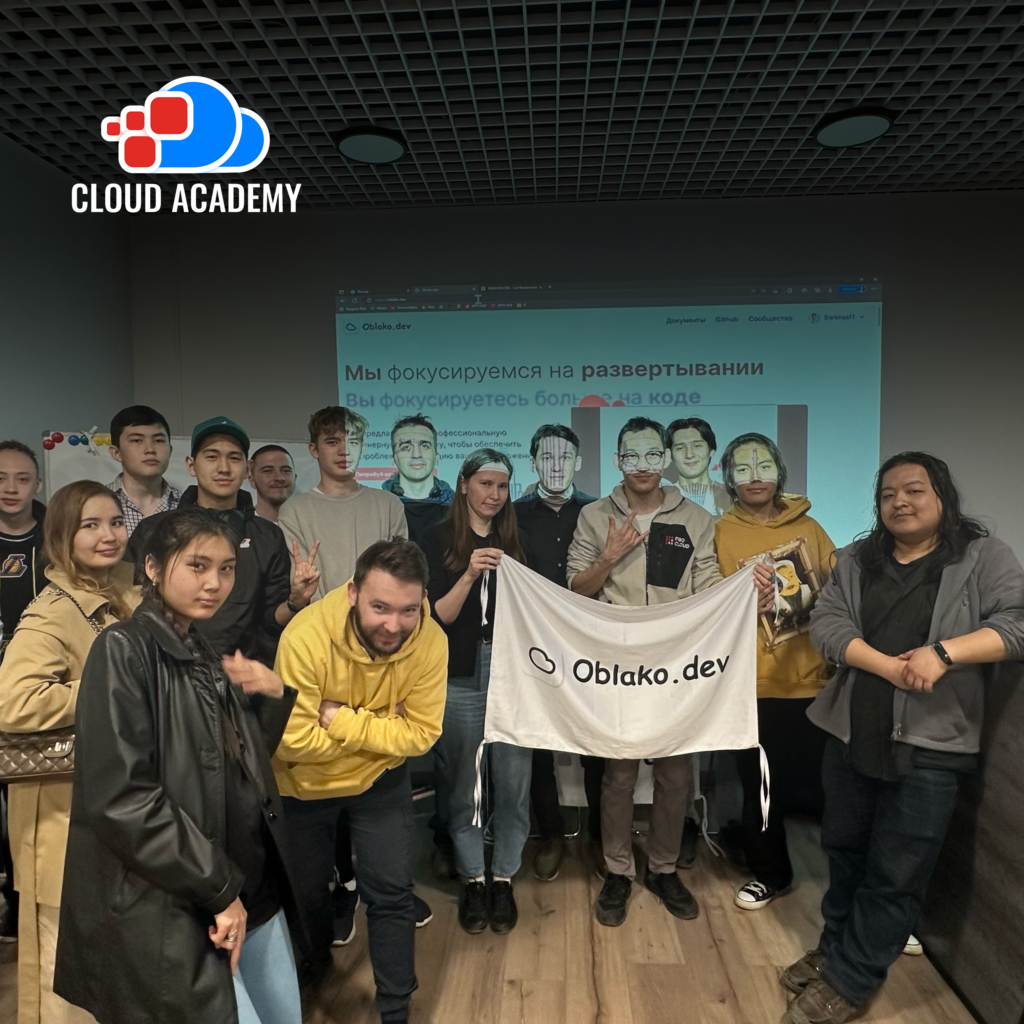
Project Implementation Narrative
Our project was conceived with a clear vision - to tackle the pressing need for skilled human resources in Mongolia's technology industry. The recognition that talented engineers were leaving the country, resulting in a detrimental brain drain, fueled our determination to provide a solution. We were driven by the motivation to offer accessible training and networking opportunities to those eager to forge tech careers within Mongolia.
Our project's objectives crystallized into a comprehensive framework:
- Accessible Training: Deliver free, accessible training courses in cloud computing and containerization technologies, including Kubernetes and AWS.
- Community Building: Cultivate a dynamic community of technology enthusiasts in Mongolia through the organization of regular meetups, Hacknights, and training sessions.
- Gender Inclusivity: Empower and encourage women to actively participate in the technology sector by providing gender-inclusive training and networking opportunities.
To bring these objectives to fruition, we embarked on a journey of implementation:
- Organizing regular meetups, Hacknights, and training sessions became the cornerstone of our initiative.
- Four series of Hacknight events were successfully conducted, with an ongoing Kubernetes training program and AWS cloud courses.
- Our training courses garnered significant attention, attracting 20 new students for each course(totaling up to 80) since the project's inception. Among them, two individuals even achieved advanced certification, which was beyond our goal. These certificates are very rare in Mongolia.
To cater to our community's needs, we harnessed the power of online platforms:
- The creation of a Facebook group, boasting nearly 4,200 members, and a highly active Discord group facilitated news sharing, networking, and the dissemination of our latest event and training opportunities. While some of the rural members were not able to participate in in-person events, they were able to actively participate in online discussions and sessions.
- Additionally, we launched a website, www.awsmongolia.com, to ensure swift and efficient information dissemination.
Project's Bigger Picture:
Our team's collective belief in Mongolia's intellectual potential as a key to international competitiveness, beyond natural resources, was a driving force. Recognizing the nation's incomplete industrialization and heavy dependence on imports, our project's aim was to bridge the technology skills gap and lay the foundation for Mongolia's technological progress.
Challenges and Adaptations:
While the project offered generous support for women in tech to get involved, and the project team reached out to all the women in the community and larger tech companies, there were still a few women overall. Therefore, the project offered additional support to women who were interested but less qualified.
Throughout the project
| Activity | Description | #Months |
|---|---|---|
| Course AWS | AWS certification validates cloud expertise to help professionals highlight in-demand skills. | 9 |
| Course KUBERNETES | Kubernetes certification validates cloud expertise to help professionals highlight in-demand skills. | 9 |
| Hacknight | We’ve been organizing a Cloud community in Mongolia called the Hacknight series since 2019. | 9 |
| Techbaatar | 3 main components of Techbaatar podcast are technology, startup, and business. | 9 |
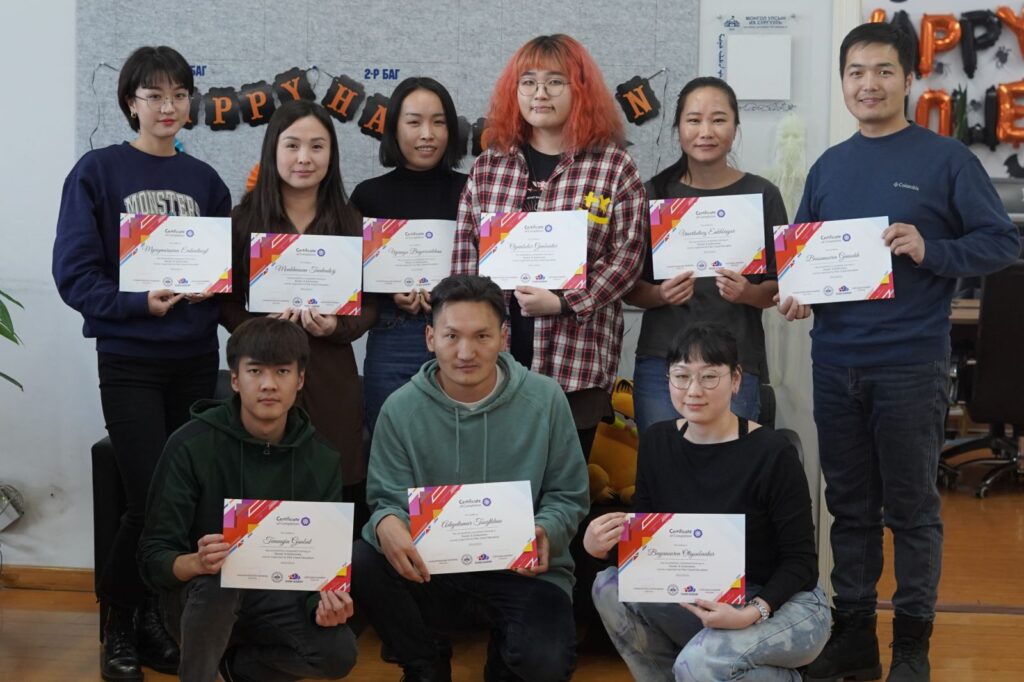
Project Indicators
| Indicator | Status |
|---|---|
| 50 participants trained by December 2023 | Completed |
| Between 200 and 400 people will participate in the bi-weekly community-building events. | Completed |
| Indicator: 50 participants trained by December 2023 Status: Completed Start and End Dates: January 1, 2023 to December 31, 2023 Description: Provide cloud training for 50 youth and women over the project duration period spanning from Jan-Sep 2023. Training success is measured by number of people successfully completed the training and successfully passed the certification that is highly sought after to increase their employability and chance to get promoted or request higher pay. Baseline:The cloud certifications are highly sought after by employers and difficult to obtain. These certificates are valued more than university diploma. However, there are not a lot of training opportunities for Mongolians. While some online courses exist, language barrier makes it hard for most people to obtain certification. Activities: A total of four courses were implemented, each course including 20 participants. Project funding covered course expenses such as teaching materials and instructor's salary. For project venue, we used in-house resources and used our meeting and classrooms. Furthermore, the project provided 30 certificate exam vouchers for youth who are not able to afford the test fees. Outcomes: The project laid the groundwork for a robust, inclusive, and growth-driven environment for women, youth, and individuals with special needs venturing into the IT sector in the previous project period. This achievement is evident through the following outcomes: 1. Full Participation and Essential Training: Originally the project aimed for 50 participants but was able to 80 participants through four courses. All 80 program participants not only attended the training in its entirety but also overwhelmingly rated the sessions as crucial to their development. 2. Certification Success: Over 65% (104% of original target) of the alumni achieved success by obtaining AWS and Kubernetes certifications, with 30 standout individuals earning complimentary exam fee vouchers from Cloud Academy. Remaining 35% percent is preparing to take the certification on their own with free support from the academy. 4. Successful Employment and Promotions: Thirteen youth alumni secured positions at high-paying tech companies upon receiving certification, showcasing the project's direct impact. Additionally, 50% of all training alumni received well-deserved promotions and increased salary within their respective companies thanks to the certifications. |
| Indicator: Between 200 and 400 people will participate in the bi-weekly community-building events. Status: Completed Start and End Dates: January 1, 2023 to December 31, 2023 Description: Between 200 and 400 people will participate in the bi-weekly community-building events. Participants will broaden their network, learn new skills, exchange their insight, share their experiences and improve their mental health. Baseline:Our AWS community in Mongolia has consistently held the position as the largest community of its kind. However, our previous events lacked comprehensive organization, resulting in limited member interaction as the activities were funded by members. As previously noted, the deficiency in technology content and community infrastructure, compounded by the absence of technology training courses in Mongolian for university graduates, has created a notable gap. Activities: During the past year, we successfully organized six bi-monthly signature Hacknight events including significant gathering titled 'Community Days' with about 260 participants in June. Moreover, online community members reached Overall, 831 people participated in the events. Six Hacknights covered the following timely topics: 1. AWS re:invent 2022 Recap 2. Switching into Serverless 3. Connect Chatgpt with other services 4. Oblako event – opportunties to reach international market for Mongolian tech companies 5. Cloud Days 6. How to improve skills of developers - Discussion event for CTOs 7. Community Day with AWS representive engineers Furthermore, to build international network for our community members we organized the following 5 events in various countries with total participation of 200 participants. 1. What's in the Cloud? at Astana Hub in Kazakhstan 2. Cloud Computing Event - in Kazakhstan 3. Unleashing the Power of Cloud Computing - Kyrgyz Republic. 4. Experience the Power of Cloud Computing - at Tashkent's IT Park, Uzbekistan 5. Empowering IT Education - in San Francisco, USA Outcomes: Our activities attracted a significant number of youths. Events involved a total of 831 participants. 1. The online AWS community, or Cloud community, has experienced remarkable growth in the past period, boasting over 4,200 members. Our dedicated community signature events, Hacknights and Community days witnessed the participation of 531 members last year alone. In addition to our signature gatherings, we collaborated with MNOG, Tech for Her, and Devfest, drawing an additional 300 attendees. Additionally, events organized by our community members globally involved 200 both Mongolian and International participants. 2. Content - Our technology event videos on the "AWS (Amazon Web Services) Mongolia" channel garnered over 4,600 views, with a staggering 1,000 hours of watch time, highlighting the significant impact and reach of our content. 3. Techbaatar by Jiguur Content -Content on our community member development channel, "Techbaatar by Jiguur," achieved substantial success with 6,200 views and 1,100 hours of watch time. The podcast will 4. Satisfaction Survey - Feedback from our series events was overwhelmingly positive, with all participants providing a stellar rating of 9.36 out of 10 on our satisfaction survey. This signifies the quality and value perceived by our engaged community members. |
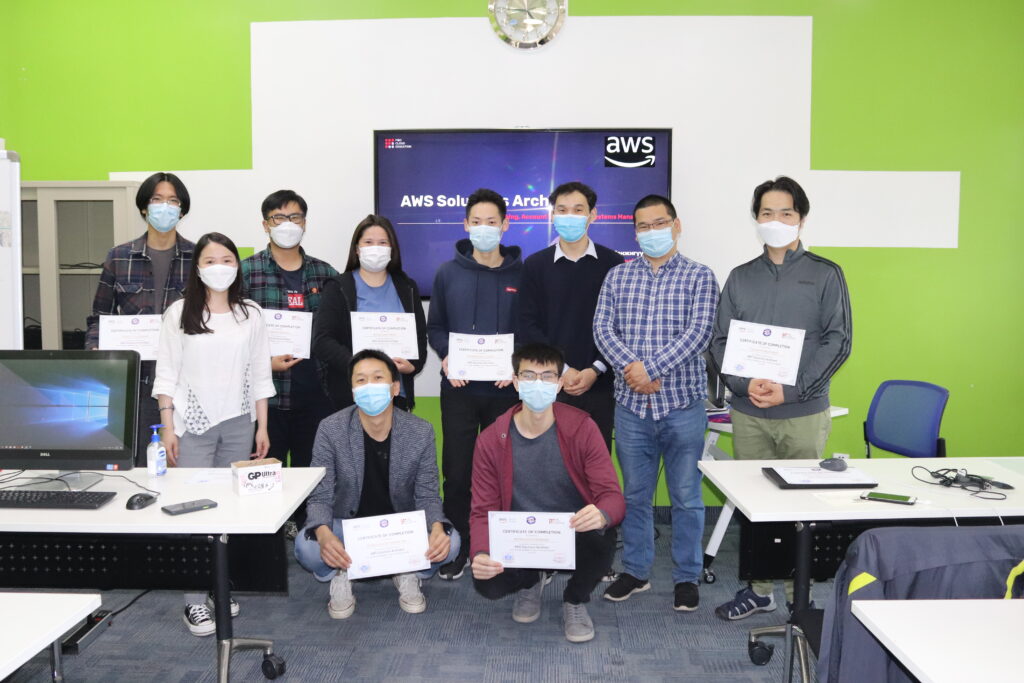
Project Review and Assessment
Reflecting on our project’s journey, we can confidently state that we have made significant strides toward achieving our objectives. The project conducted four series of Hacknight events and a Kubernetes training program. We have also succeeded in establishing and nurturing a community of almost 4,200 members through our active Facebook and Discord groups and in-person events.
Key Findings and Outcomes:
One of the most significant findings of our project is the substantial demand for training and development opportunities within Mongolia’s technology industry. Our project has effectively addressed this need, providing a much-needed solution for individuals to enhance their skills and knowledge in the field. Moving forward, we plan to continue offering training and development opportunities while sharing our experiences and successes within the community.
Contribution to Internet Development:
Internet development of a country is closely linked to the country’s technology industry. Our project has made a noteworthy contribution to Internet Development in Mongolia by enhancing the technical capacity of individuals and empowering them to actively participate in the industry. This impact is tangible, evidenced by the success of our certified cloud engineers and the steady growth of our community.
Potential for Further Growth and Development:
While we take pride in our achievements, we remain aware of the untapped potential for further growth and development. The persistent demand for training opportunities propels us to expand our offerings and engage with our community continually. We are committed to meeting evolving needs and overcoming emerging challenges based on feedback of our community members.
Strengths and Weaknesses:
One of our project’s most significant strengths was the strong and active network and community we built. As Mongolia is a small country with a small tech community, the network has built a reputation to be a place to network and learn. On the flip side, a notable weakness is the need for additional funding to scale up our training programs and reach an even broader audience.
We express our sincere gratitude to all those who have supported and believed in our mission. Together, we are shaping Mongolia’s technological landscape and contributing to a brighter future for our country.

Diversity and Inclusion
In line with our commitment to gender equity and inclusion, our project has made significant strides during the reporting period.
- Participation in the Project Team and Communities Served: We actively recruited and involved women and gender-diverse individuals in both our project team and the communities we serve. Over 30% of the 200 individuals engaged in the technology industry in Mongolia are women which is significantly larger than the share of women in the tech industry in Mongolia.
- Team Structure and Decision-Making: Our project team’s structure is diverse, encompassing both men and women from various backgrounds. We have established a collaborative environment where all team members, irrespective of gender, have equal opportunities to participate in decision-making processes.
- Capacity Building: We provided specific opportunities for capacity building and skills development for women, LGBTQI+ individuals, and marginalized social groups based on other diversity criteria. These efforts aimed to empower underrepresented groups in the technology sector.
Support for People with Disabilities:
While our primary focus has been on gender equity, we have also taken steps to ensure that our project activities are accessible and accommodating to individuals with disabilities. We have initiated connection with a Special school, and explored opportunities to collaborate in the future. As continuation of this project, we are planning to organize a workshop at the special school focusing on teaching how to use technology in daily life to facilitate individuals with disabilities. The workshop will be funded by community fundraising.
Language and Cultural Diversity:
As Mongolia is a largely homogenous both culturally and linguistically, we have actively encouraged our members to engage with cultural minorities and cultures outside of Mongolia by organizing joint events with countries from Kazakhstan and Kyrgyzstan community members.
Inspiring Change Internally:
Our project has not only aimed to drive change in the broader community but has also inspired internal changes within our organization. We have recognized the importance of diversity, equity, and inclusion as core values and have prioritized them in our organizational policies and practices. We are inspired to organize further project to specifically tailored for specific groups such as rural population and people with disabilities. People have reached out to us with their ideas and requested our support and expertise. We are excited to explore these opportunities further and bring our programs to the next level.
Challenges and Future Commitments:
While we have made substantial progress, we acknowledge that challenges persist, particularly in overcoming traditional gender stereotypes and societal expectations that hinder women’s participation in technology. We are working to break these stereotypes by providing more exposure to women in tech and highlighting their achievements. We are committed to addressing these challenges through targeted outreach and support.
In conclusion, our project has made significant advancements in promoting gender equity and inclusion, ensuring accessibility for individuals with disabilities, and embracing language and cultural diversity. We have not only impacted the communities we serve but have also ignited positive changes within our organization. As we move forward, we remain dedicated to championing diversity, equity, and inclusion in all our future projects and initiatives.

Project Communication
Communication is one of the key aspects of the project to raise awareness about the issues in the sector and attract more young people to join the community where they can grow and learn. We have used various communication channels, including our website, social media platforms, email newsletters, and webinars, to share project updates, progress, and outcomes with our partners, and beneficiaries. Our overall social media reach passed 9400. We also organized several events, such as workshops and conferences, to promote the project and engage with the community. A total of 531 people participated in these events. Furthermore, we have directly reached out to larger tech companies and universities for targeted outreach for women and underprivileged youth.
In terms of promoting our organization, we have highlighted our organization's mission, vision, and values in all our communication efforts, emphasizing our commitment to promoting equity, inclusion, and sustainability in all our projects. We have also used our project's success stories to showcase our organization's capacity to deliver innovative and impactful projects.
To engage with the community of beneficiaries, we have maintained regular communication with our project partners and conducted surveys and interviews to gather feedback on our project's outcomes and impacts. We have also organized community events to promote community participation in project planning and implementation.
We have implemented a communication strategy for this project, which has been funded through the project budget. The strategy includes specific communication objectives, target audiences, key messages, communication channels, and evaluation metrics. We have regularly reviewed and updated the strategy based on our progress and feedback from partners.
Our project findings and lessons learned have informed our decision-making during the reporting period, helping us to make necessary adjustments and improvements to our project activities. We have shared our findings and lessons learned with other organizations during the reporting period through webinars, conferences, and workshops. These organizations have used our information to inform their project planning and implementation.

Project Sustainability
In terms of sustainability, the project has generated a lot of interest and support from various organizations and individuals in Mongolia’s technology industry. As a result, we have formed partnerships with several organizations to help us achieve our objectives, including the Ministry of Education and Science, the Mongolian University of Science and Technology, and several technology companies.
Additionally, the project has helped to raise the visibility of our organization and increase our credibility within the industry. This has led to increased interest and support from other organizations and individuals in the community.
As for future development, we plan to continue our work beyond the end of the grant. We are actively seeking out additional funding and partnerships to help us achieve our long-term goals. We are also working on developing new programs and initiatives to further support the growth and development of Mongolia’s technology industry.
Overall, the project has been a significant success in terms of sustainability. It has generated a great deal of interest and support from the community, and we are confident that our work will continue to have a positive impact on the industry for many years to come.
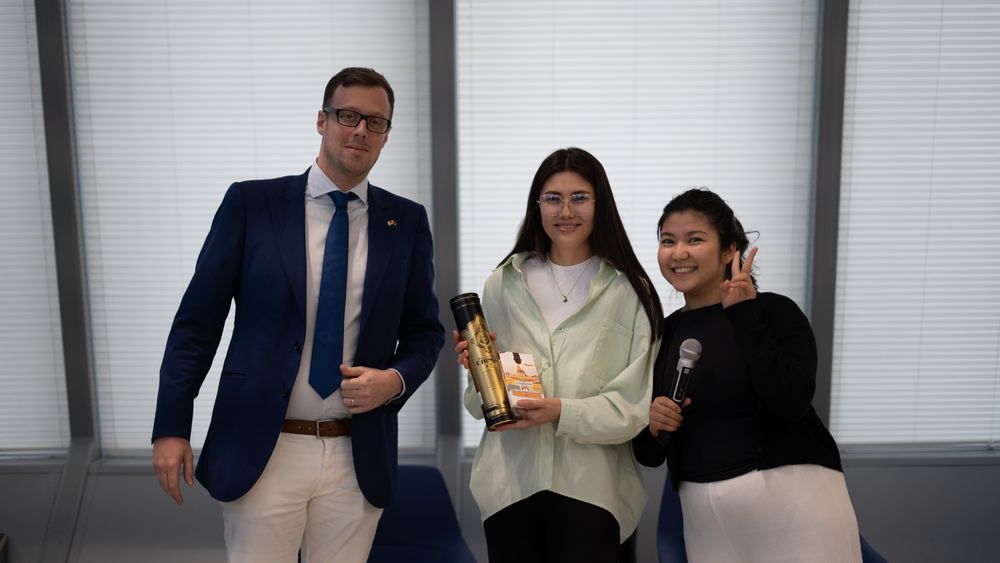
Project Management
As young people in the technology industry, we encourage our project team to be agile and flexible. For us, results are more important than adherence to strict rules and procedures. We encourage our team members and instructors to be creative and effective. As a young organization, we are still building our culture and growing to be more effective and innovative.
Adherence to Timelines:
While project activities were implemented within the project timeline and yielded the desired results, the project reporting has been delayed. The project team is learning from the causes of delay and working hard on improving on the weaknesses. The project manager has effectively coordinated efforts, ensuring all team members are aligned and actively working toward the common goal.
Effective Procurement Management:
Through effective and open communication, the procurement processes went smoothly. The team has built effective and flexible standard operating procedures for the procurement process that all team members can adhere to easily even when there is a change in the team composition. The team hasn’t encountered significant challenges regarding procurement.
Capacity Building and Sustainability:
As the project was the first major project of the Cloud Academy, it provided valuable learning opportunity for the team who mostly consist of people with tech and start-up backgrounds. The project team made sure that all team members understood the theory of change and the importance of such activities. We believe learning by doing is the best method for capacity building, therefore, we encouraged our team members to take on any tasks under the mentorship of senior members.
Inspiring Organizational Change:
The project has not only impacted external communities but has also inspired positive change within the organization itself. It has served as a catalyst for recognizing the value of investing in technology and innovation to boost the economy. The organization’s capacity to implement and manage similar projects in the future has grown significantly, thanks to the success of this endeavor. The team has expanded thanks to community members and training program beneficiaries who wished to volunteer for the project. Everyone is encouraged to share their project ideas for our future activities.
Tailored Administrative Support:
Our background in technology has inspired us to not only prioritize user experience but also establish innovative ways to work problems. The business environment in Mongolia is fairly old-fashioned and rigid. However, our team encouraged everyone to share their voices and concerns without repercussions and helped us reduce bureaucracies in project management without compromising the quality of work. While everyone is respectful, everyone is welcome to bring up new ideas, share concerns and propose changes without worrying about potential repercussions. These tailored approaches have streamlined communication channels, introduced regular reporting mechanisms, and facilitated effective coordination of project activities.

Project Recommendations and Use of Findings
Our project was a constant learning and improving process. We have encouraged our team members not to get discouraged by mistakes but to see it as an opportunity to learn. We have maintained an open communication to effectively address all major and minor issues we faced. Based on our experience with this project, we would like to make the following recommendations to other practitioners or researchers in the field facing similar problems or implementing similar solutions:
- Prioritize building strong partnerships and collaborations with local organizations and stakeholders. This can help ensure the sustainability and effectiveness of the project, as well as increase community engagement and ownership.
- Make sure to incorporate gender equity and inclusion into all aspects of the project design and implementation. While we receive mixed responses from our community members regarding inclusivity issues, consistent mentions and inclusivity efforts have made our community more accepting and open.
- Develop a clear communication strategy and plan early on in the project, and regularly evaluate and adapt it as needed. This can help ensure that project activities and outcomes are effectively communicated to all members and partners, and can help to build support and engagement from the community.
- Build mechanisms for regular monitoring and evaluation throughout the project, and use this information to make adjustments and improvements as needed. This can help ensure that the project is achieving its objectives and having the intended impact.
- Look for opportunities to leverage the project to generate future development opportunities and partnerships, such as seeking additional funding or collaborations with other organizations.
- Finally, prioritize capacity building and sustainability in all aspects of the project design and implementation. This can help ensure that the project continues to have a positive impact even after the end of the grant period and that the community is empowered to continue driving progress toward its goals.
During the reporting period, we shared our findings and lessons learned with other organizations working in similar fields, through presentations at conferences and workshops, as well as through publications and reports. We have seen other organizations use this information to inform their own project design and implementation, and we hope that our experiences can continue to inform and inspire others in the future.
As we work on the final report, we will continue to reflect on how our project findings and lessons learned can inform future planning for our organization. We plan to use this information to help guide our future project design and implementation, as well as to inform our organizational strategy and priorities moving forward.
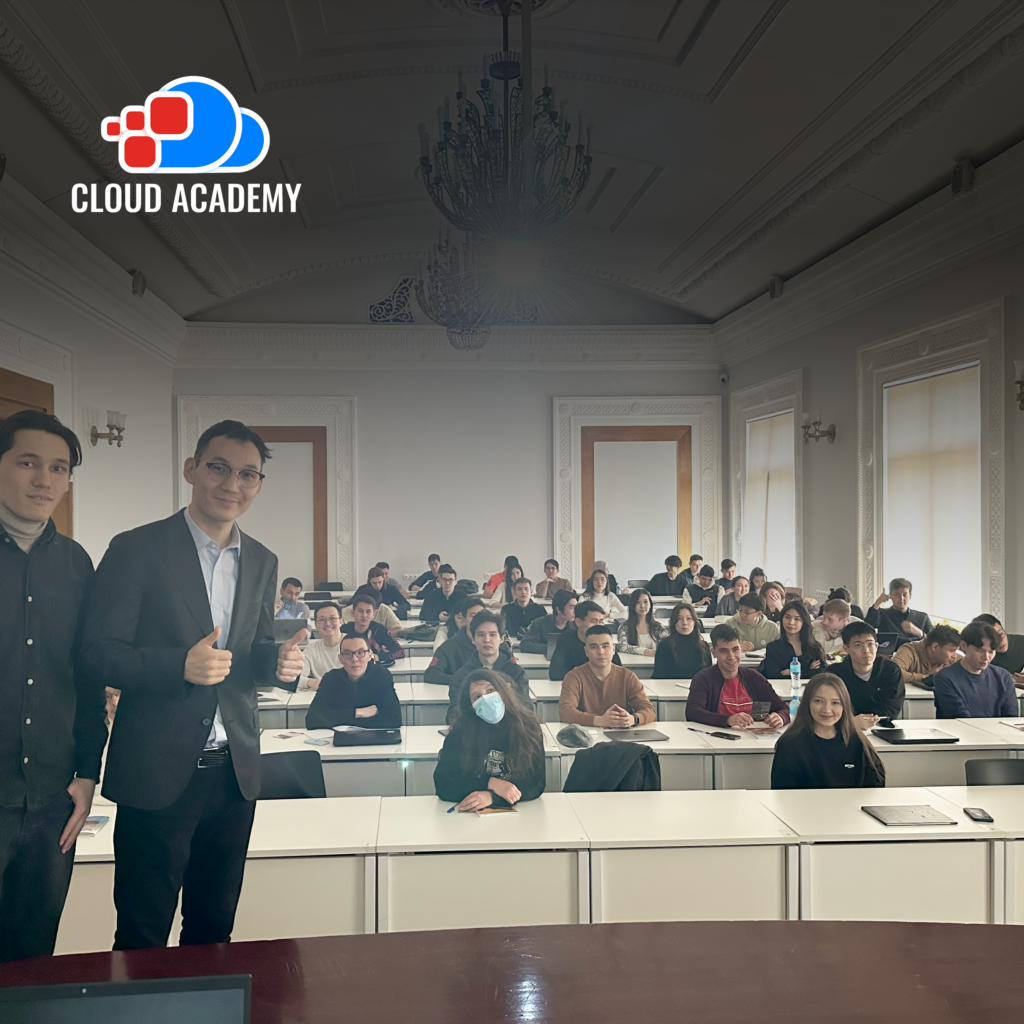
This work is licensed under a Creative Commons Attribution-ShareAlike 4.0 International License 


